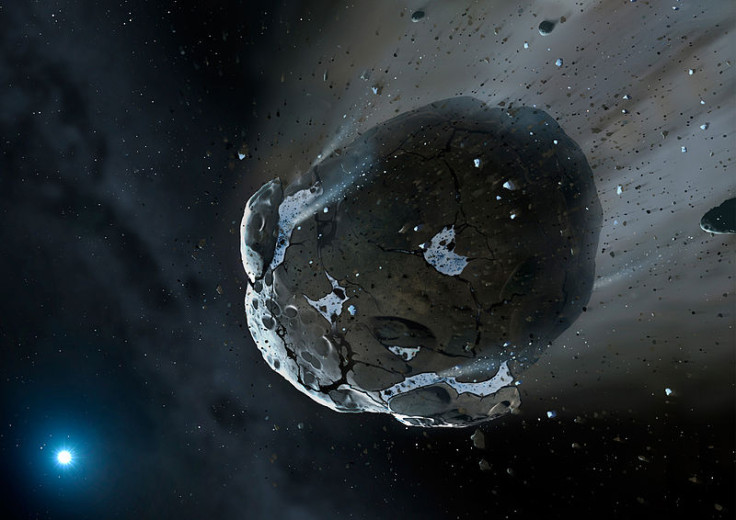Asteroid Collisions 'Common': Scientists Record 26 Nuclear-Scale Explosions on Earth

Asteroid strikes on Earth are more common than we realise, according to a visualisation showing where large meteorites have collided with our planet in recent years.
The B612 Foundation, a US-based group of Nasa asteroid monitors who campaign on the issue of space protection, have revealed that 26 nuclear-scale explosions were caused by minor planets striking Earth between 2000 and 2013.
In one case, the blast was more powerful than the 15-kiloton atom bomb which destroyed Hiroshima in 1945. The impacts were recorded by the Comprehensive Nuclear-Test-Ban Treat Organisation (CTBTO), in which infrasound sensors capture clandestine bomb explosions.
Dr Ed Lu, a former Nasa astronaut, warned that the asteroids were large enough to wipe out extensive areas on the planet, including entire cities, as the meteorites were not detected or tracked in advance by any Earth or space observatories.
Although the majority of the asteroids were too high in the atmosphere to cause any serious damage, the frequency of the strikes reveal just how vulnerable Earth is.
Only one of the 26 events was detected in advance and only by a few hours, while many of the strikes went unseen as they occurred in remote areas of the oceans.
Presenting the organisation's findings at the Museum of Flight in Seattle, Dr Lu said: "While most large asteroids with the potential to destroy an entire country of continent have been detected, less than 10,000 of the more than a million dangerous asteroids with the potential to destroy an entire major metropolitan area have been found by all existing space or terrestrially-operated observatories."
The energy of the asteroid impacts ranged from one to 600 kilotons. In February 2013, an asteroid measuring 20m wide hit the Russian city of Chelyabinsk with a flash of light brighter than the Sun, even at a 100km distance.
Yet the strike itself was minute in comparison with other events recorded on Earth. In 1908, a 45m-wide meteor struck a remote corner of Earth.
Dr Lu told BBC News that the strikes can be monitored in the same way as earthquakes: "In the cities that have a major danger - Tokyo, Los Angeles, San Francisco - they know the odds of big earthquakes by observing how many small earthquakes there are.
"Because there's a known distribution of earthquakes, meaning that earthquakes come in all sizes, small to large - if I can measure the small ones, I know how many big ones they're going to be. And you can do this with asteroids.
"These asteroid impacts in the last decade have been ones that we haven't had much data on until recently, and they tell us that in fact asteroid impacts are more common than we thought."
The B612 Foundation has proposed its Sentinel telescope, a space observatory currently in development with Ball Aerospace, designed to locate 90% of the asteroids greater than 140m in diameter that exist in near-Earth orbits. The project is expected to be ready for launch in 2018 and would help detect meteors hidden by the Sun's glare.
Information from Nasa's Wise telescope suggests that there may be 20,000 objects between 100 and 1,000m in size which are yet to be identified and tracked.
"Picture trying to spot something that's only the size of a small apartment building, that's tens of millions of miles from Earth, and that's black against a black background," Lu added. "That's incredibly hard. That's what requires the technological advances of Sentinel."
© Copyright IBTimes 2025. All rights reserved.






















